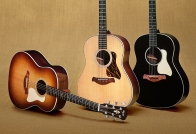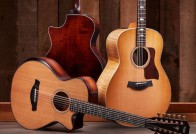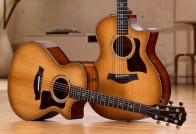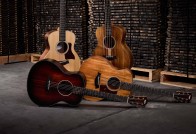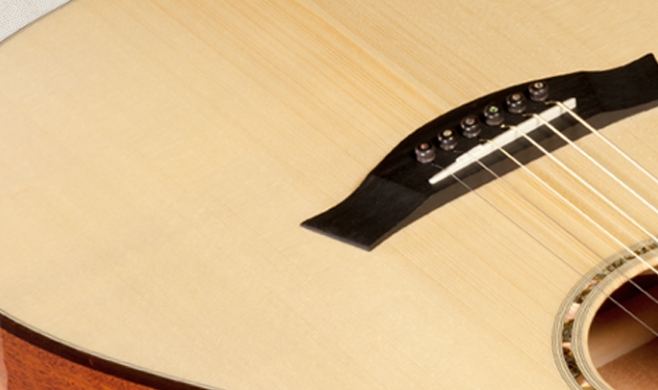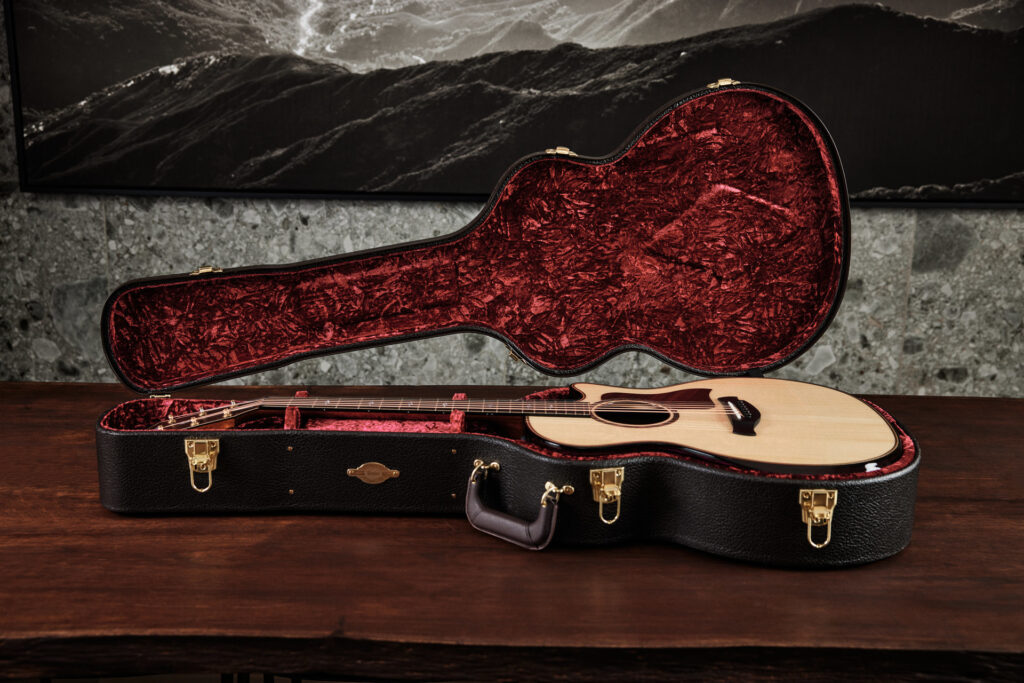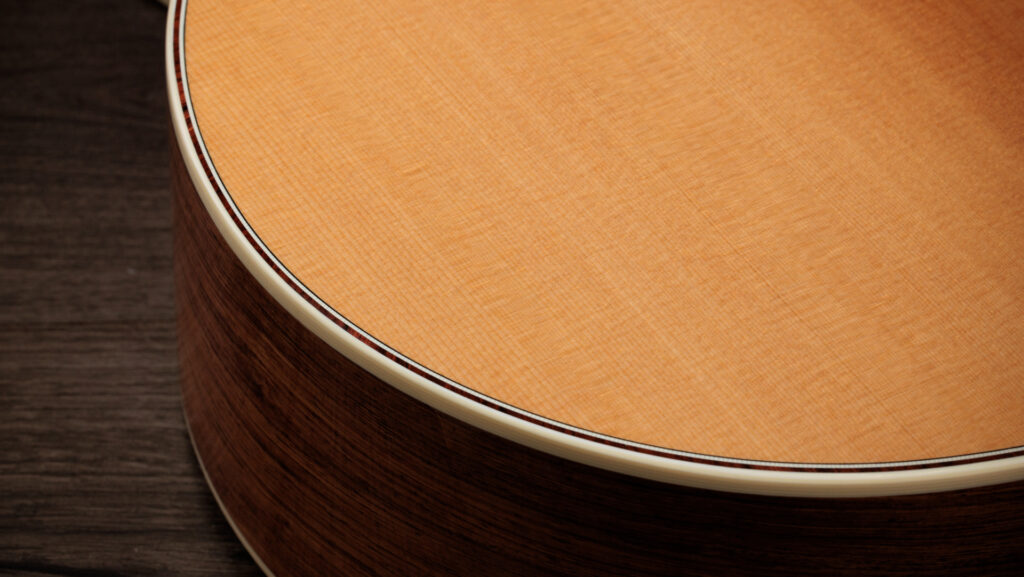We are often asked during our factory tours—as well as online—about our guitar tops and variations in the grain patterns. At first glance, the tops appear to be identical on either side of the center line of the guitar. This is because the tops (and backs) are bookmatched, meaning we take a top-sized rectangle of wood—most often spruce—split it down the middle, and glue the two pieces together side-by-side, with the tighter grain lines in the center. Generally the visual result is a mirror-like symmetry, although slight variations are sometimes noticeable. What is often more noticeable are variations in the grain patterns, such as irregular spacing, which often reflect different growth rates from the tree’s life. Even tops cut from the same log, in close proximity to each other, can feature different grain patterns. We asked Taylor luthier Andy Powers for his take on the nature of such patterns. His response:
As a guitar maker, I hold a great deal of respect and value for the material we work with. Trees were once living organisms that responded, changed and adapted to the world around them. Like us, they experienced seasons with varying degrees of coldness, dryness, warmth and wetness. Their growth would fluctuate through seasons of plenty, when the basic elements they needed to accelerate growth were abundant. They also experienced seasons of dryness and need, when their growth was slowed. Once a tree was felled, we see this marvelous life story unfold with each grain line. Some trees experienced lives with few changes and few surprises, as evidenced by uniform, regularly spaced grain lines. Others had more stories to tell. Considering the age range of these majestic spruce trees—typically between 180 and 450 years at the time of felling—most have quite a story to tell. Think about all the changes these trees have lived through in the last 300 years. It took that long for the uniqueness of that tree to develop into a material we enjoy using for instruments. It is precisely this individuality that pleases an instrument maker. No two trees, boards or guitar tops are exactly the same. This precious personality is what gives a finished instrument its fingerprint, distinguishing it from others like it. Certainly, musical instruments can be made with manufactured materials, synthetics and the like. There may one day be materials deemed theoretically superior to wood. However, I believe none will ever match the beauty, the complexity, richness and the very life emanating from an instrument made of wood.
From a technical standpoint, wood is more alike than it is different. One of the key factors we look at is the unique stiffness-to-weight ratio in a piece, properly termed as its specific modulus of elasticity, from which many of a top’s sonic characteristics can be determined. As many scientists can attest, wider grain lines are in no way inferior sound conductors, and some will argue they are more efficient. A top with a mix of tight and wide grain lines might come from a tree that experienced slow-growing conditions early in life, and easier, more plentiful conditions late in life, quite possibly the result of its neighboring trees being cut down, leaving more resources for this one to utilize. Whatever the case may be, a top featuring the progression of slow-to-faster growth in no way downgrades this particular guitar as an inferior musical tool. If the unique attributes of a top don’t please the player or seem to hinder one’s musical performance, the person should simply look for one that resonates with his or her aesthetic and musical tastes.




